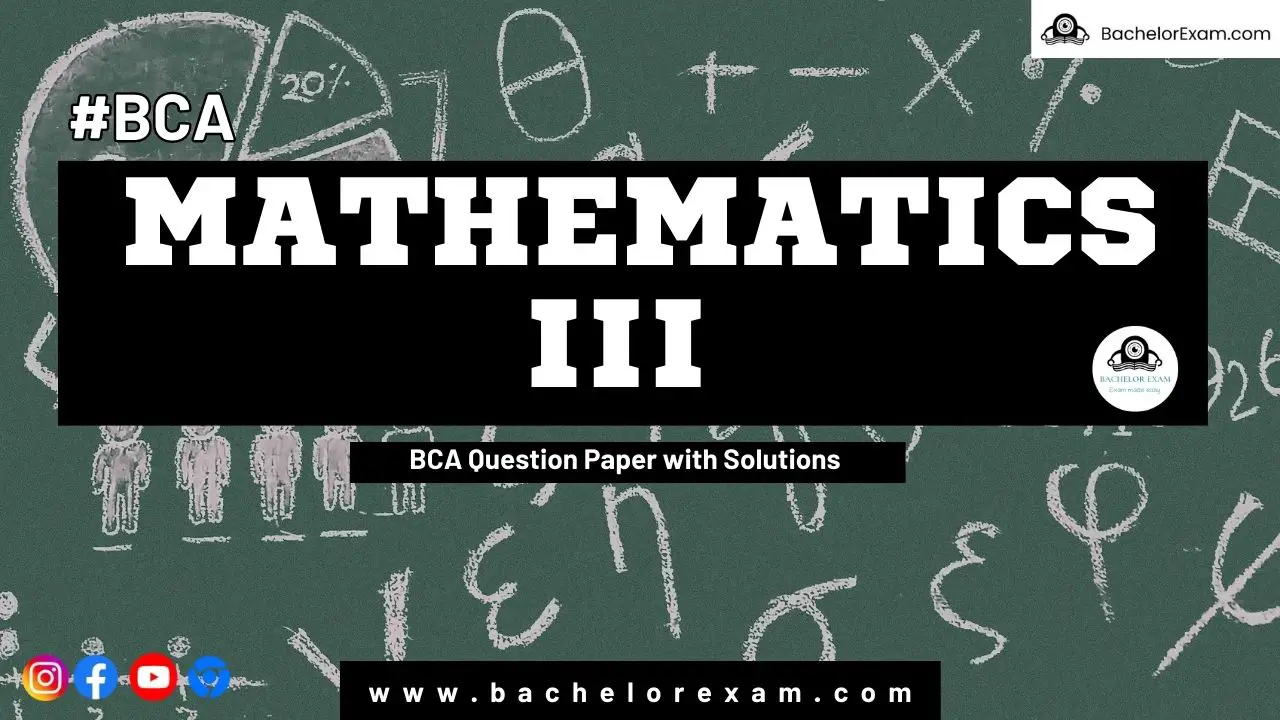Learn more about the Mathematics-III solved question paper for the BCA. Improve your mathematics skills with advanced calculus and numerical techniques while gaining insightful knowledge that will help you succeed in school.
Dudes 🤔.. You want more useful details regarding this subject. Please keep in mind this as well. Important Questions For Mathematics-III: * Important Short Questions * Solved Question Paper * Syllabus
Section A: Mathematics-III Very Short Question Solutions
Q1. Show that
|z1 + z2|2 + |z1 – z2|2 = 2|z1|2 + 2|z2|2
Ans. We have,



Q2. Define sequence with example.
Ans. Let S be any non-empty set. A function whose domain is the set of N natural numbers and whose range is a subset of S, is called a sequence in the set S.



Q3. If f(x, y, z) 3x2y – y3z2 then find grad fat point (1, -2, -1).
Sol. The gradient is a vector:
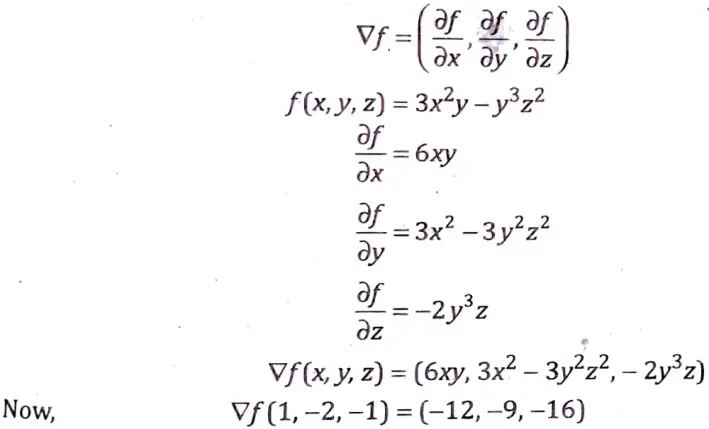


Q4. Solve



Sol. Let x + y = z



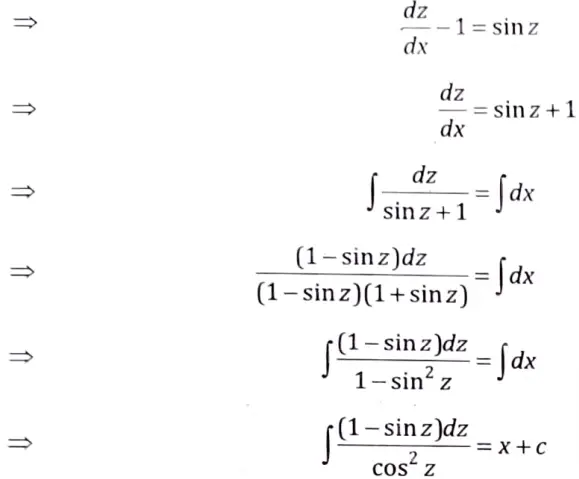


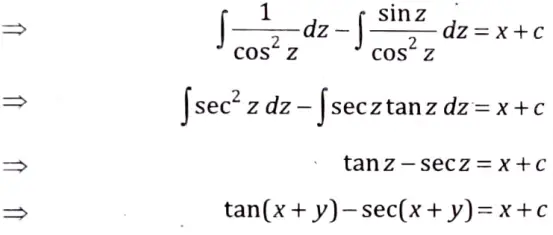


Q5. Solve
(D3 + 3D2 + 3D + 1)y = ex + e-x
Sol. Given equation is
(D3 + 3D2 + 3D + 1)y = ex + e-x
∴ Auxillary equation is
D3 + 3D2 + 3D + 1 = 0
∴ (D+ 1)³ =0
∴ D = -1, -1, -1 are the roots.
∴ C.F. = (c1x2 + c2x + c3) (ex + e-x)
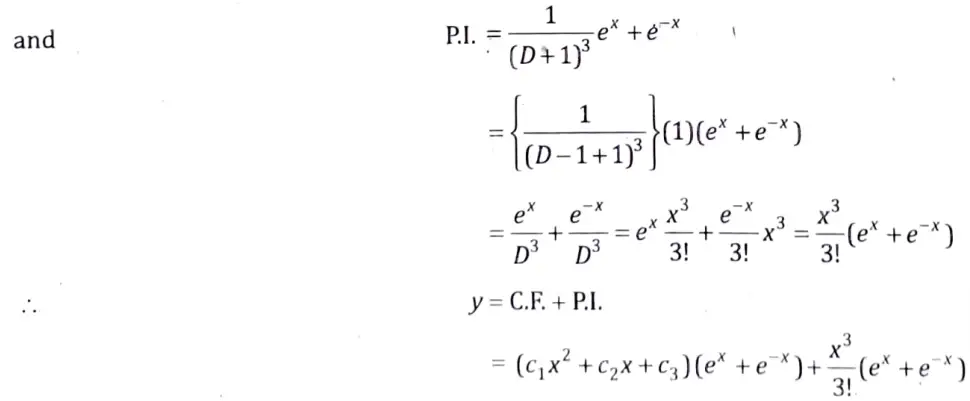


Section B: Mathematics-III Short Question Solutions
Q6. Determine the regions defined by
|z-1| + |z + 1| ≤ 4
Sol. Here, |z1 -z2| = |1 – (-1)| = 2
and a = 4
∴ |z1 – z2| < a
Since |z – z0| + |z – z1| = c (constant) is the equation of ellipse with z0 and z1 as focii, so |z – 1| + |z + 1| ≤ 4 is the equation of all points lying inside and on an ellipse with focii (1, 0) and (-1,0).
Hence, region represented by |z – 1| + |z + 1| ≤ 4 is an interior and boundary of an ellipse.
Q7. Solve



Ans. The given equation can be written as



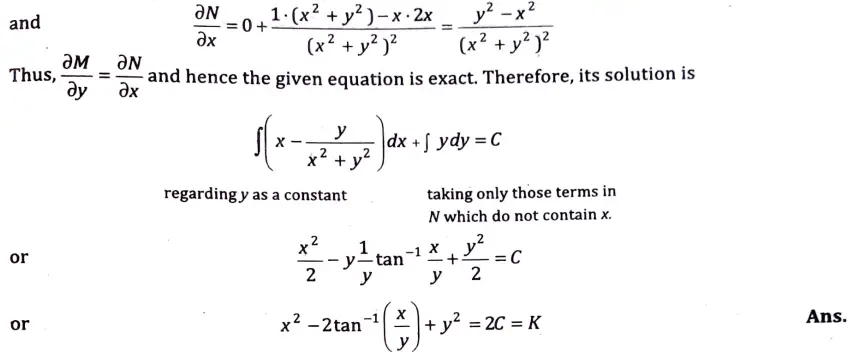


Q8. Show



Sol. Given,
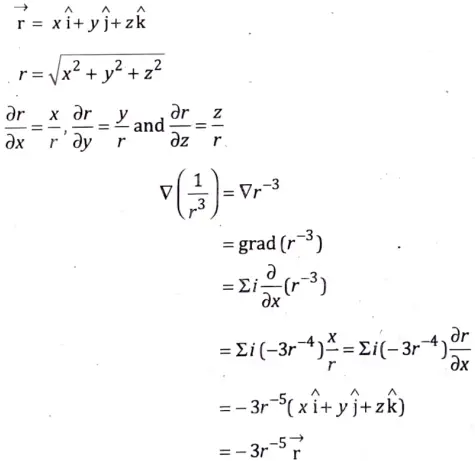


Section C: Mathematics-III Detailed Question Solutions
Q9. Show that



Sol. Let
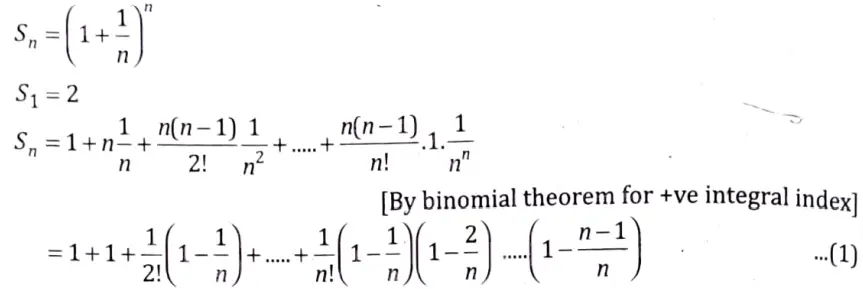


Similarly



Comparing eqs. (1) and (2), we get
Sn+1 ≥ Sn, ∀n
The sequence 〈Sn〉 is monotonically increasing.
Now, from eq. (1), we have



⇒ The sequence 〈Sn〉 is bounded.
Thus, the sequence〈Sn〉, being a monotonically increasing sequence bounded above by 3 is convergent and equal to e where 2 < e < 3.



⇒ Limit of the sequence 〈Sn〉 lies between 2 and 3, i.e. = e.
Q10. Test the convergence of following series.



Sol. Here, we have



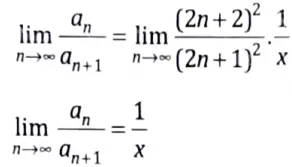


If x< 1,the series is convergent
If x > 1, the series is divergent
If x = 1,



Therefore, we have to use another test.



Hence, given series is divergent.
Q11. Obtain the Fourier series of



in the interval (0, 2𝝅) and hence deduce



Sol. Fourier series off(x) having period 2𝝅, 0
The formula of Fourier series is
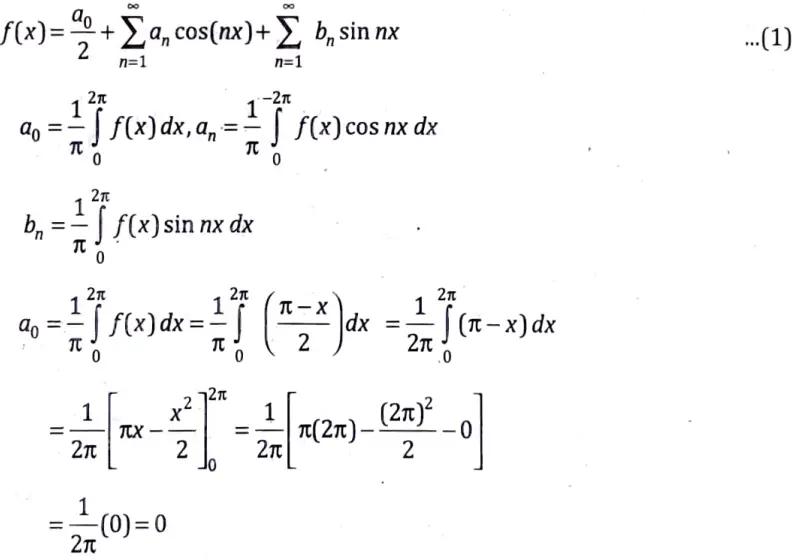


a0 = 0
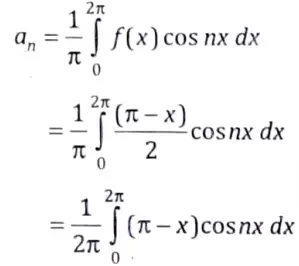


From Bernoulli rule
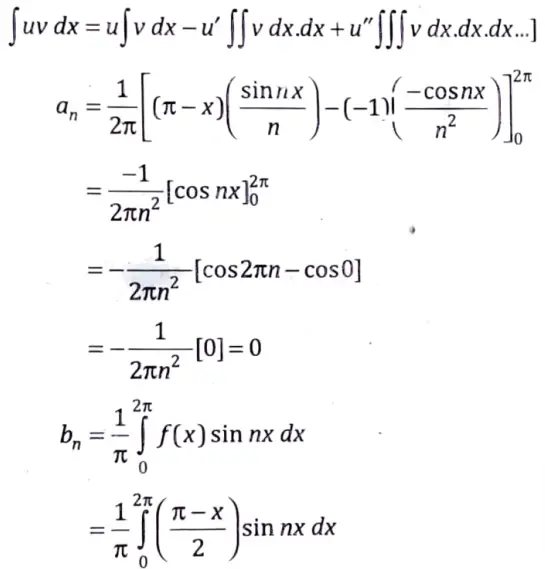


Apply Bernoulli rule
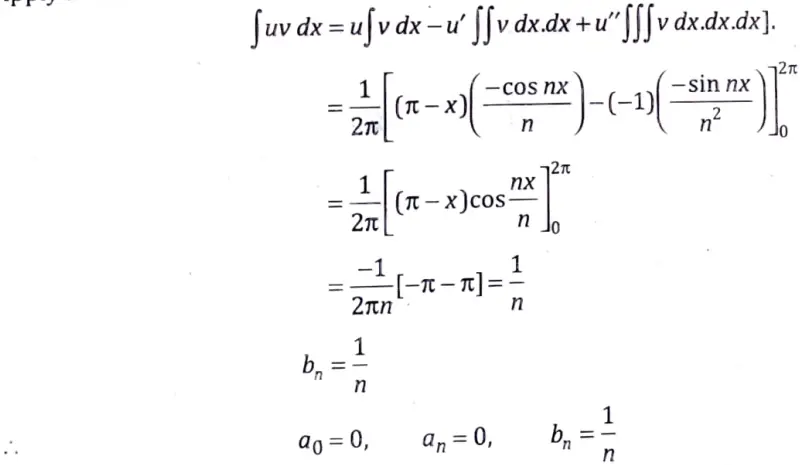


Substitute a0, an, bn in Fourier series, we get



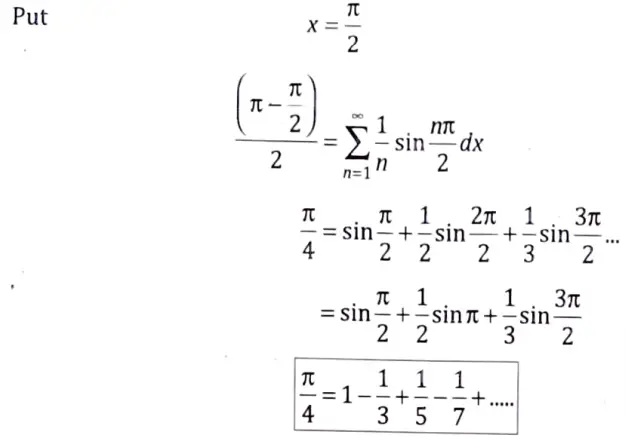


12. Solve
(1 + y2)dx – (tan-1y – x)dy = 0
Sol. The given differential equation can be written as
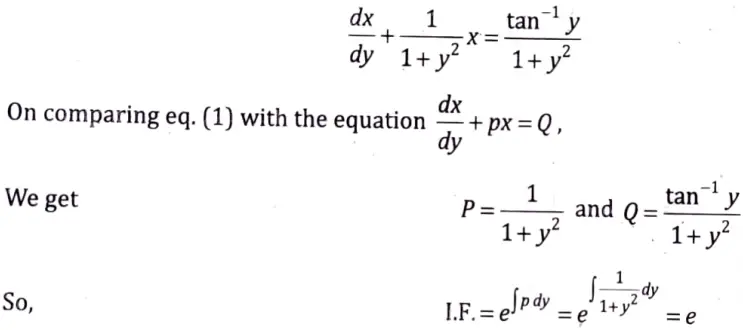


Thus, the solution of eq. (1) is
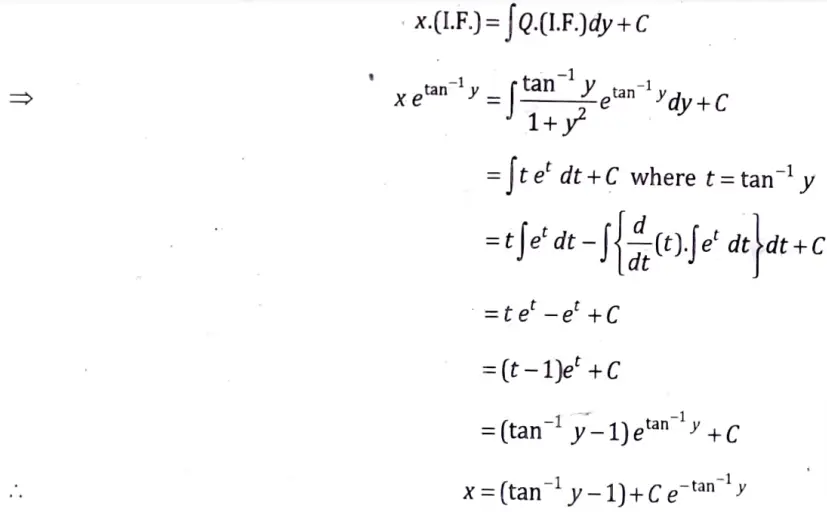


Which is the required solution.
Q13. Solve
(D2 + 1)y = sin x sin 2x
Sol. Here, the given equation is
(D2 + 1)y = sin x. sin2x
To find the C.F. of eq. (1), the auxiliary equation is
(m2 + 1) = 0 ⇒ m ± i
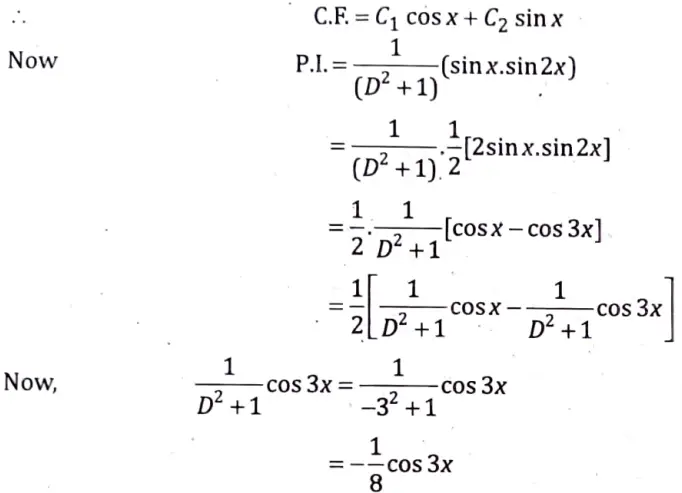


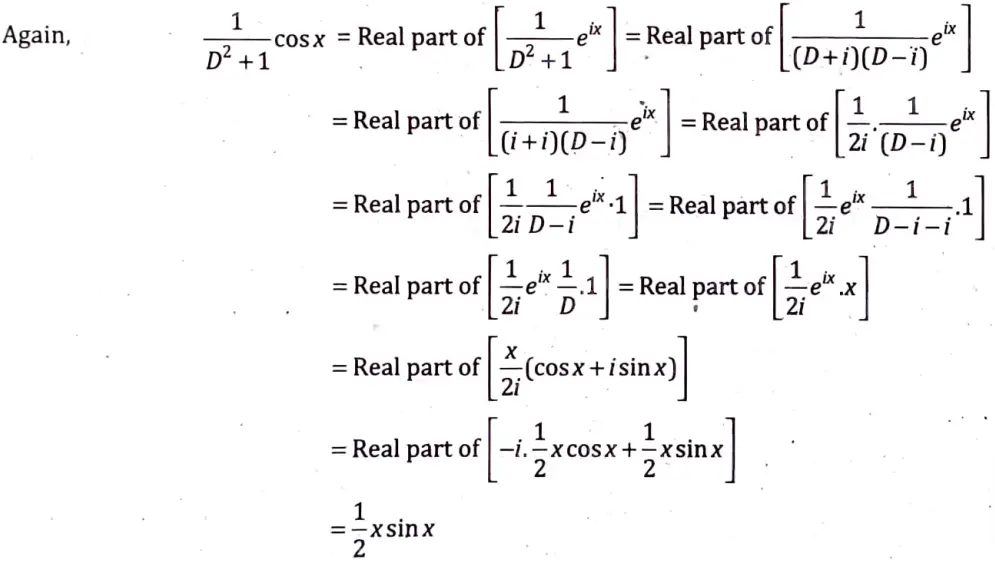


Hence, the complete solution of eq. (1) is given by
y = C.F.+ P.I.



